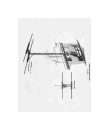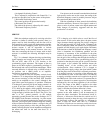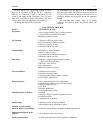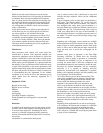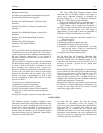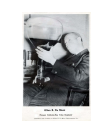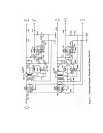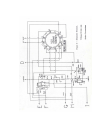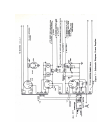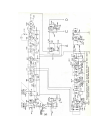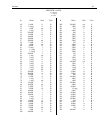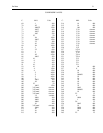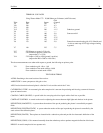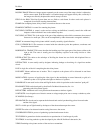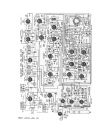
Du Mont 23
DOUBLE IMAGE Where two images appear separately on the screen, one of the sweep circuits is adjusted to
half its correct speed. If the horizonta1 is at fault the images will appear side by side, conversely if
the images are vertically displaced the vertical sweep is at fault
FIELD In the RMA Television System there are two fields to each frame. In other words each picture is
comprised of two fields scanning alternate lines.
FRAME One complete picture, thirty of these a second are thrown on the screen.
FRAMING CONTROL A control for centering the picture.
FOCUSING CONTROL A contro1 on the receiver to bring out definition; it actually controls the width and
sharpness of the individual 1ines on the cathode-ray tube.
FOCUSING (ACTION) This is the action of the gun of the cathode-ray tube which concentrates the stream of
electrons to a small spot. (This can be accomplished by either electrostatic or magnetic methods.)
GHOST An unwanted image in the picture which is usually caused by signal reflection.
GUN (CATHODE RAY) The structure or mount inside the cathode-ray tube that produces, accelerates and
focuses the electron beam.
HORIZONTAL TEAROUT This term describes the breaking up of the upper part of the picture, either to the
right or left. The cause is usually poor low frequency response in the sweep circuits or video
amplifier.
INTERLACING This refers to the technique of dividing the frame into two fields with displaced lines to
eliminate flicker.
INTERACTION A term usually used by designers indicating leakage or the mixing of a signal into another
circuit.
LINE A single line of the 441 comprising the television picture.
LINEARITY Means uniform rate of motion. This is required as the picture will be distorted in non-linear
portions.
MODULATION A process of applying the video signa1 to the modulating or control electrode (or grid) of a
cathode-ray tube so as to produce the lights or shadows of a picture.
PARAPHASE A term used in te1evision and English books which is equivalent to the American "push pull."
PHASMAJECTOR A tube developed by the Allen B. Du Mont Laboratories, Inc. for
generating television picture signals.
REFLECTORS Additional rod or rods placed near the antenna to reinforce signals.
SAWTOOTH A saw shaped wave of electric current or voltage employed to scan or sweep a cathode-ray tube.
SCANNING (See Sweep)
SEPARATOR The circuit used to separate the horizontal and vertical synchronizing pulses from each other
and the video signal.
SPOT A visible spot of light formed by the impact of the electron beam upon the screen.
SWEEP The action of an electron beam in tracing lines across the screen.
SYNCHRONIZATION A process of producing synchronism between circuits.
TELEVISION A general tern for the transmission or reproduction of visual images by radio.
TELETRON A receiving cathode-ray tube developed by the Allen B. Du Mont Laboratories, Inc.
VIDEO Pertaining to the picture section of the receiver or transmitter.



